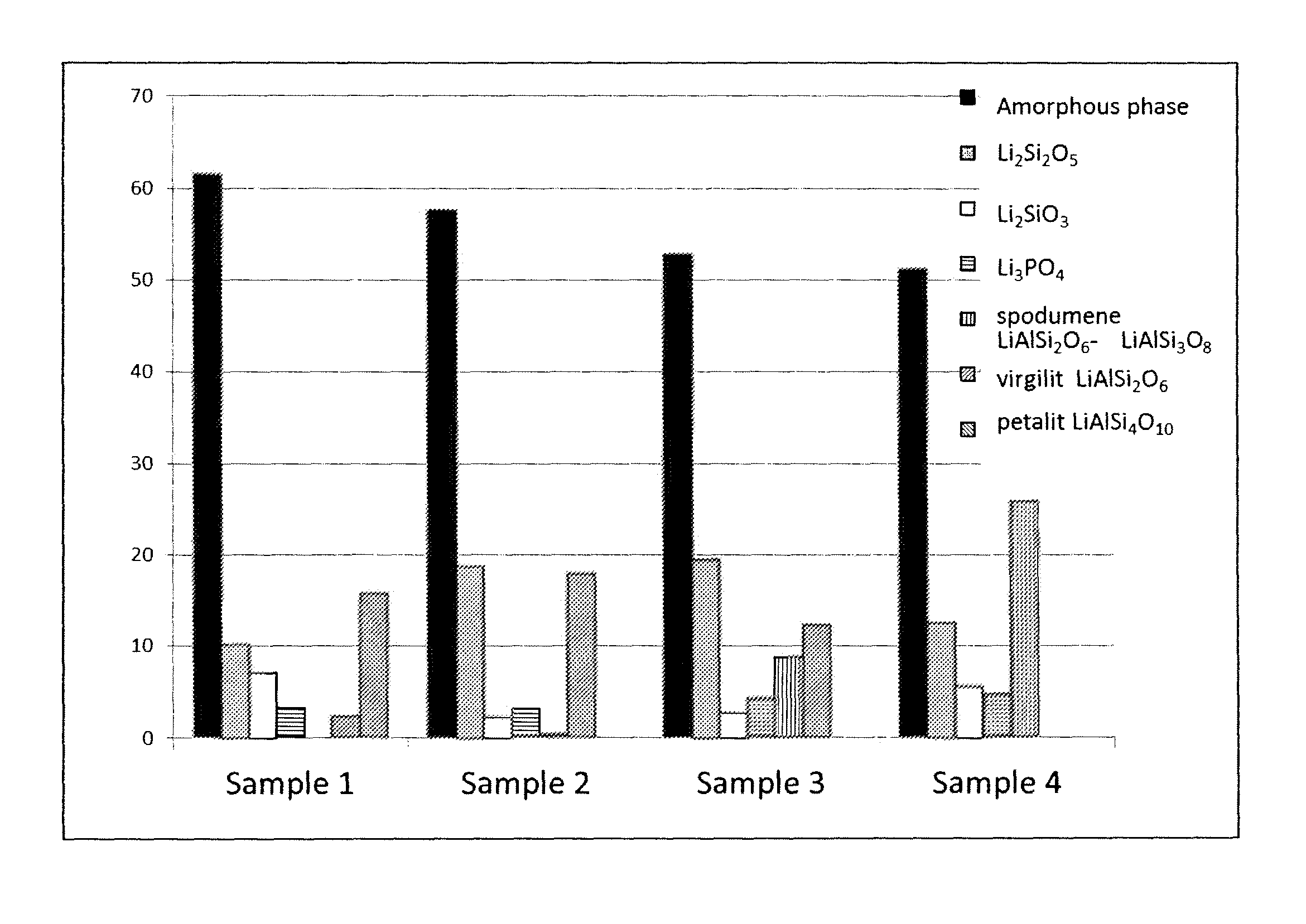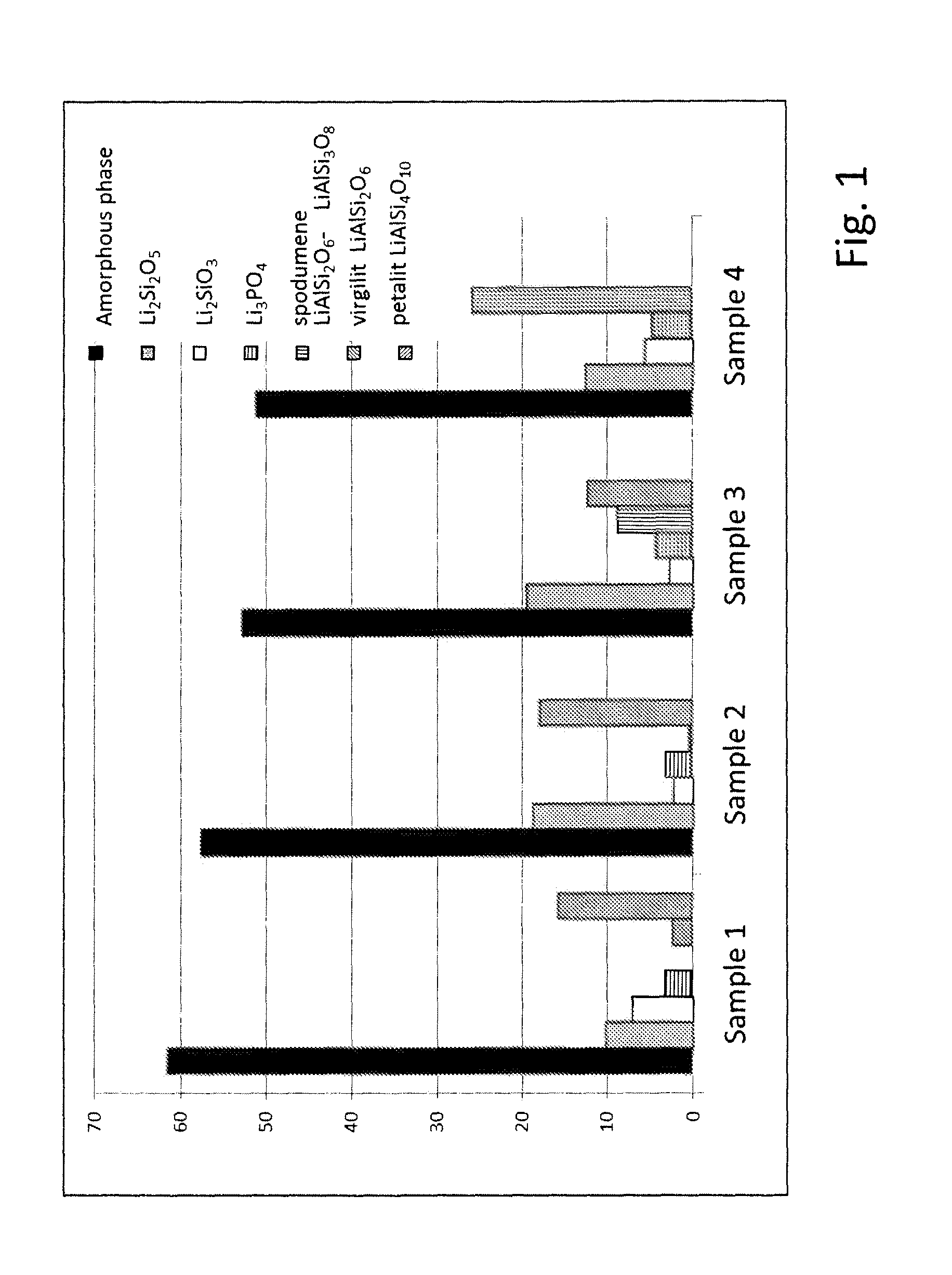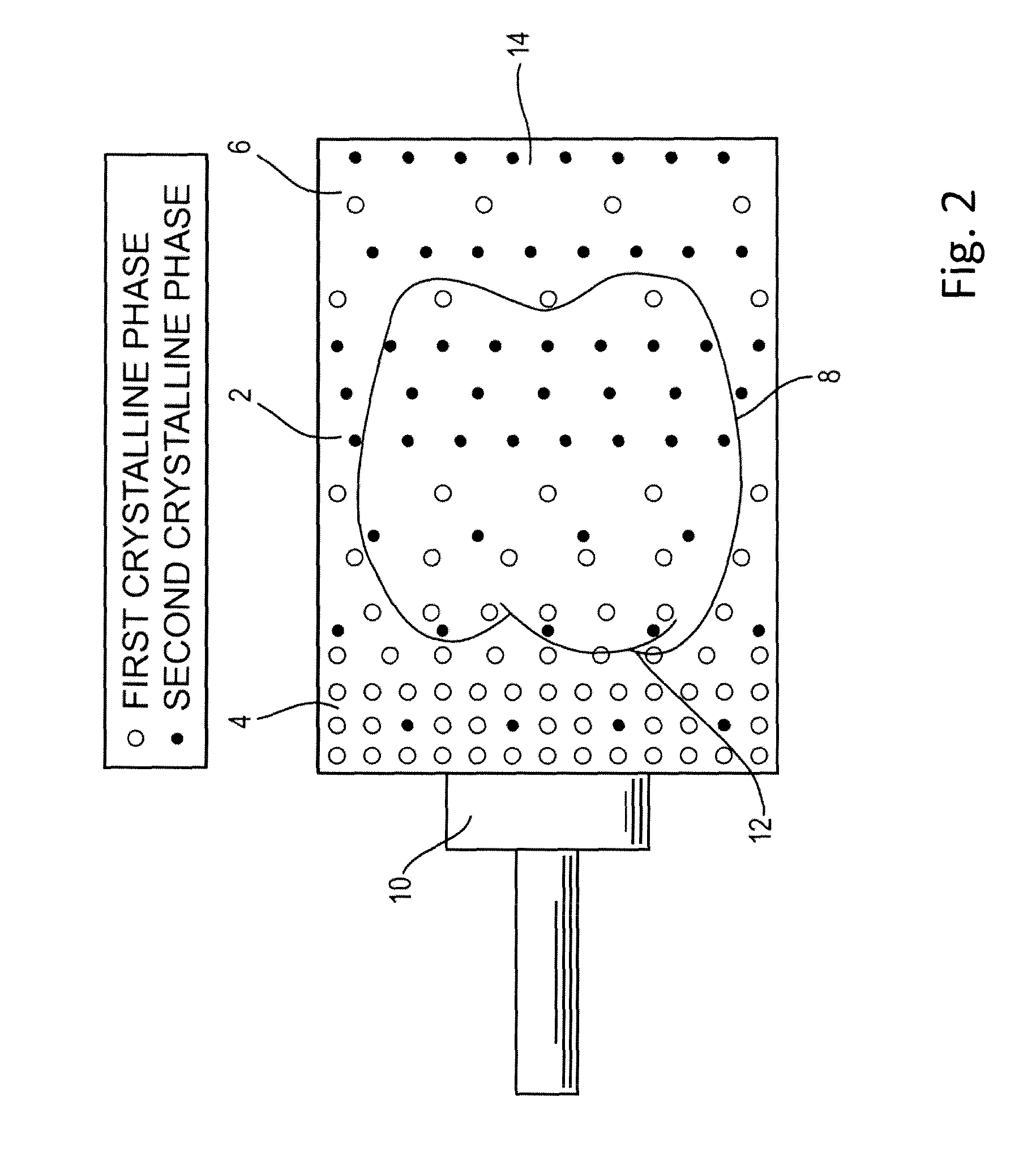Process for preparing a glass-ceramic body
a glass-ceramic body and glass-ceramic technology, applied in the field of glass-ceramic body preparation, can solve the problems of long processing time, poor strength of restorations prepared according to this technique, and high wear of machining tools, so as to improve the strength of the body, reduce the risk of fracture, and facilitate the distribution of stresses
- Summary
- Abstract
- Description
- Claims
- Application Information
AI Technical Summary
Benefits of technology
Problems solved by technology
Method used
Image
Examples
examples
[0091]The following experiments are based on the following (raw) glass composition:
[0092]
componentamount (wt-%)SiO266.5Li2O10.5Al2O310.5K2O0.45Na2O4.0ZrO23.0CeO21.5V2O50.05P2O53.5
[0093]Differential Scanning Calorimetry (DSC) and Differential Thermal Analysis (DTA) of the composition has shown three peaks, one at about 655° C., one at about 812° C. and one at about 826° C., indicative of three crystallization steps.
[0094]Based on these findings, a first sample of the glass-composition has—after a nucleation step at 550° C. for three hours—been subjected to a crystallisation step at 660° C. for three hours (crystallisation step I). A second and a third sample were subjected to a crystallisation step at 815° C. for three hours (crystallisation step II) following crystallisation step I and a crystallisation step at 830° C. for three hours (crystallisation step III) following crystallisation step I.
[0095]X-ray diffraction (XRD) analysis has revealed a formation of Li2SiO3 (lithium metasi...
PUM
| Property | Measurement | Unit |
|---|---|---|
| temperature | aaaaa | aaaaa |
| temperature | aaaaa | aaaaa |
| thickness | aaaaa | aaaaa |
Abstract
Description
Claims
Application Information
 Login to View More
Login to View More - R&D
- Intellectual Property
- Life Sciences
- Materials
- Tech Scout
- Unparalleled Data Quality
- Higher Quality Content
- 60% Fewer Hallucinations
Browse by: Latest US Patents, China's latest patents, Technical Efficacy Thesaurus, Application Domain, Technology Topic, Popular Technical Reports.
© 2025 PatSnap. All rights reserved.Legal|Privacy policy|Modern Slavery Act Transparency Statement|Sitemap|About US| Contact US: help@patsnap.com



